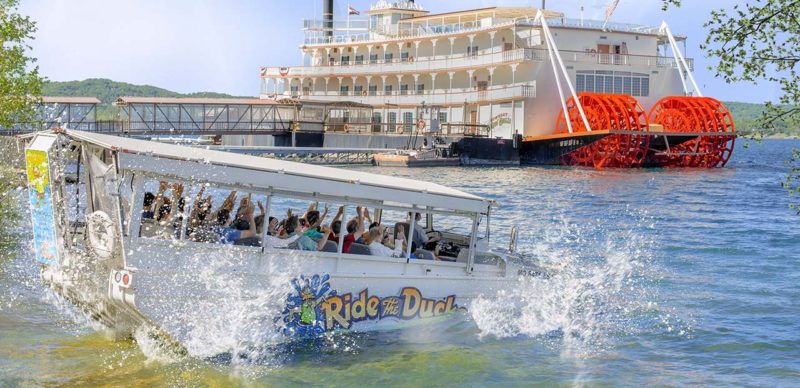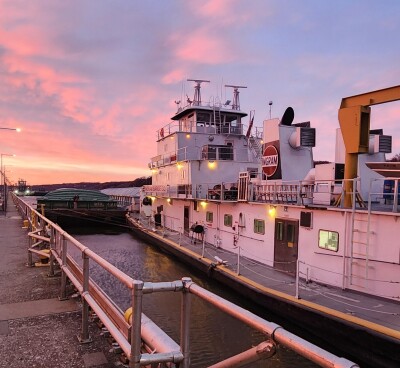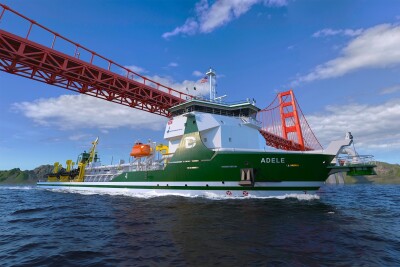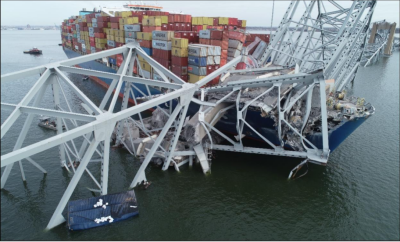Coast Guard Commandant Adm. Karl Schultz has convened a Marine Board of Investigation into the July 19 sinking of the tour duck boat Stretch Duck 7 in Missouri, a decision to investigate the accident that killed 17 with the same gravity as major maritime disasters.
Investigations of such scale are infrequent. In recent years only the 2010 Deepwater Horizon oil spill, the 2015 sinking of the cargo vessel El Faro in Hurricane Joaquin, and the 2017 loss of the crab boat Destination in the Bering Sea have led to formal investigation boards.
The Coast Guard will conduct a thorough and detailed investigation to identify all potential causal factors associated with this tragedy,” said Capt. Wayne Arguin, who was appointed chairman of the Marine Board of Investigation by Schultz. Arguin served in 2010 as a staff officer to former Commandant Adm. Thad Allen as he led the federal Deepwater Horizon response.
“The marine board consists of five members who will investigate all aspects of the casualty including, but not limited to, the pre-accident historical events relating to the accident, the regulatory compliance of Stretch Duck 07, crewmember duties and qualifications, weather conditions and reporting, and Coast Guard oversight,” according to a Coast Guard statement announcing the board.
The move comes amid immense pressure and criticism that government agencies should have acted more forcefully on recommendations from the National Transportation Safety Board in its report on a 1999 duck boat sinking near Hot Springs, Ark., that killed 13. The Coast Guard and NTSB are working together as equal partners in the new investigation.
In the Hot Springs report, NTSB officials then called for a slate of safety measures including modifications to make the World War II-era design safer for passenger service. Now there are calls to ban duck boats from commercial use, including from former NTSB chairman Jim Hall.
The amphibious boat, operated by Ride the Ducks Branson, Branson, Mo., took 29 passengers on Table Rock Lake despite a National Weather Service advisory of strong thunderstorms. NTSB investigators recovered video recordings from the raised vessel that showed the crew being instructed to take the group on the lake early, then struggling as the storm struck just a few minutes after they had launched from a boat ramp.
Along with announcing the board of inquiry Wednesday, the Coast Guard released a certificate of inspection issued for Stretch Duck 7. The COI specifies limits on operating conditions for the vessel, with winds not to exceed 35 mph and wave heights of 2' or less.
Winds exceeded 60 mph during the storm that blew through the Branson region, according to the National Weather Service.
The Missouri attorney general’s office confirmed to the Kansas City Star this week that a criminal investigation has been opened into the sinking. On Tuesday, Sen. Claire McCaskill, D-Mo., introduced legislation that would mandate the NTSB safety recommendations made after the Arkansas accident in 1999.
Those recommendations included requiring amphibious passenger vessels to be equipped with enough reserve flotation to stay afloat in the event of flooding, additional interim measures such as removal of canopies, and increasing inspections until all duck boats are upgraded.
“Nearly 20 years ago following a similar incident, recommendations were made to help prevent tragedies like we experienced in Branson but they were largely ignored,” McCaskill said. “It’ll take some time before we know exactly what went wrong in Branson, but there’s absolutely no reason to wait to take this commonsense step.”
The Coast Guard issued issued Marine Safety Information Bulletin 06-18, titled “Amphibious Passenger Vessel Operations,” urging operators to check their safety practices and procedures:
- Review the routes and conditions listed on the vessel’s Certificate of Inspection (COI). Ensure crews are familiar with and clearly aware of their obligations. Additionally, ensure everyone is aware of all operational limitations of each vessel.
- Review the company’s operations manual recommended by Navigation and Vessel Inspection Circular (NVIC) No. 1-01. If there is currently no operations manual, it is highly recommended that one be developed. Additionally, owners and operators may wish to incorporate programs and procedures characteristic of a Safety Management System to effectively mitigate risk and establish a culture of continuous improvement.
- Conduct crew training and drills in accordance with the vessel’s Emergency Response Plans with a specific focus on: crew duties and responsibilities, inclement weather monitoring and response, flooding, methods and locations for beaching, and vessel evacuations.
- Take a proactive approach to vessel oversight to include frequent communications with the master for hazard monitoring, to include changes in weather conditions.





